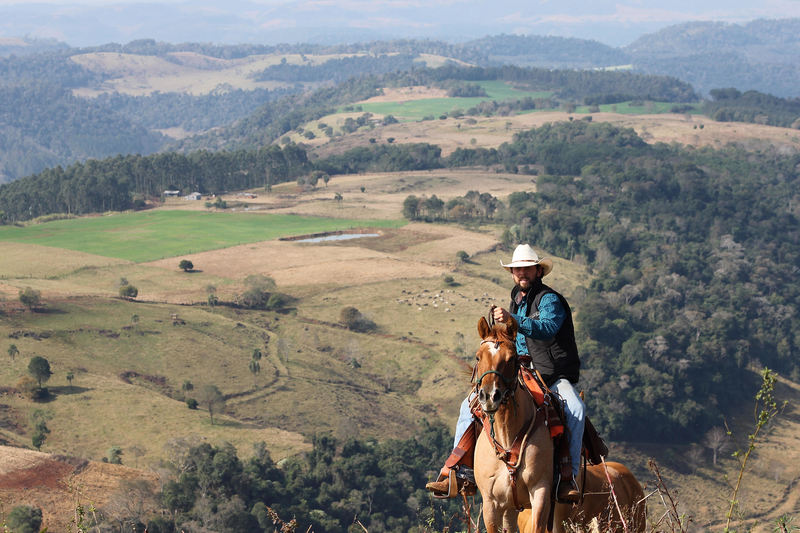As we rode closer and closer to the state of Santa Catarina, the official gateway into the south of Brazil, everything changed. The terrain transitioned from long stretches of flat plantations to rugged mountains with large pastures for beef and milk cattle. Along with the lay of the land, the people, food, and culture also changed drastically.
What was once the land of cowboys slowly became the home of the Gaucho.
.jpg?1467734515)
“You must always grab the chimarao (yerba mate) with your right hand,” a light skinned gaucho said before passing me a cuia (Calabash Gourd) full of the warm mate.
In a horse barn, 60 kilometres from the Santa Catarina state line I sat in a circle with 5 Gauchos passing the warm mate around. While Life and Doll chewed some tasty alfalfa in a stall a few metres from us, these vaqueros gave me a lesson on the Gaucho culture.
“The Gaucho is the cowboy of Argentina, Uruguay, Paraguay and southern Brazil,” an elderly man with a great-big black felt hat said to me.
All of the men wore a poncho, loose-fitting trousers called bombachas, belted with a tirador, and a large a facón (knife) tucked into their belts. They explained how they drank the yerba mate everyday in the early morning and late afternoon.
.jpg?1467734380)
The hot drink is a part of their strong tradition which came from the natives that lived in the southern part of south america and the Spanish colonizers.
They also explained how the diet of a real Gaucho is composed mainly of meat.
“Because the Gaucho works hard all day, he has to have a lot of energy. Meat in our culture can and should be eaten for breakfast lunch and dinner,” one of the men told me.
They also showed me photos of them Long Roping and Jinetiando (riding bucking broncos). These events are what make up the traditional Gaucho Rodeo.
.jpg?1467734459)
Before I laid out my saddle blankets for the night, one of the Gauchos pulled me aside to give me a special present.
“I want you to have my knife, put it on your belt and you will immediately gain the respect of the true Gauchos in the south of Brazil,” he said passing me a beautiful knife. Its handle made from the shin bone of an ostrich.
